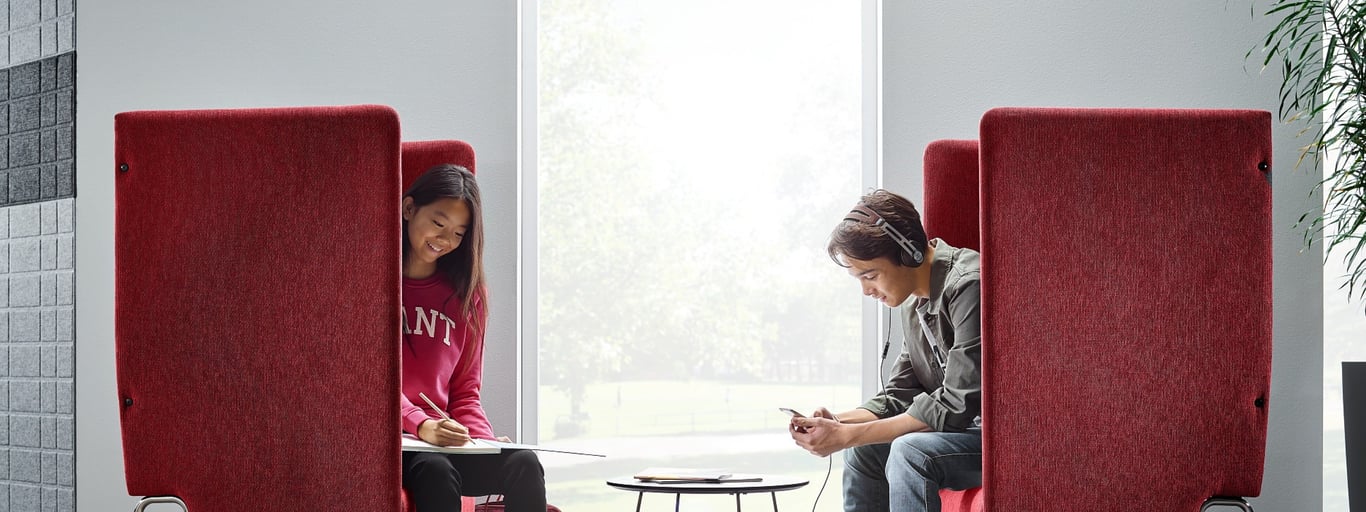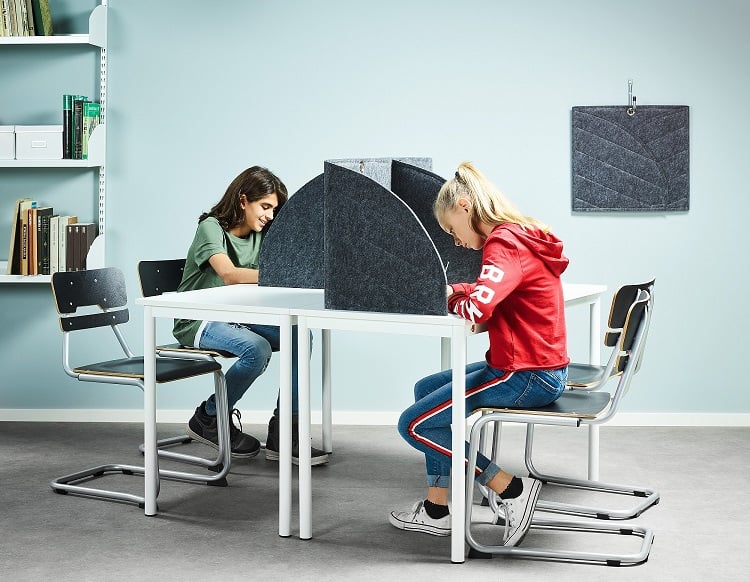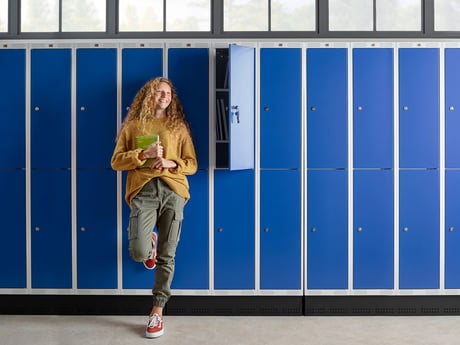- AJ Products UK
- Blog: Tips to Inspire Happiness at Work
- Improving the work environment
- How to improve concentration in the classroom with acoustic furniture

How to improve concentration in the classroom with acoustic furniture
The demand for sound-smart products is greater than ever. In fact, relatively simple changes to the classroom can make a big difference.
Split the room into smaller spaces with screen walls
Chatter in the classroom, scrapping sounds from chairs and tables, noise from the corridor and clatter from table tops all contribute to high noise levels. In addition to fatigue and headaches, noise can also cause deterioration in sleep, memory, speech perception, learning and reading comprehension. Therefore, it is important to keep the overall noise level as low as possible to give students better conditions for calm effective work.
A good tip is to divide the room into different zones using sound-absorbent screens to halt the sound waves. Use screens and furniture, such as bookcases and storage cabinets, to build rooms within the room in order to separate noisier areas from quiet spaces. A sound-smart sofa with high sides is an affordable and functional way to create the feeling of a secluded room that can become a temporary private zone, ideal for reading corners or private study.
Choose the right classroom furniture
Think about the furniture used in the classroom. If possible, try to replace regular classroom tables with desks equipped with built-in sound absorbers or a sound-damping surface. The choice of chairs also plays a major role in creating the right acoustic environment. Selecting chairs on skids instead of four-legged chairs will automatically contribute to a quieter classroom, since the skids cause less vibration on the floor. Sound absorbent feet can also be used to prevent scrapping sounds.
Make use of the walls and ceilings
An easy way to reduce the sound level in the classroom is to mount acoustic panels on the walls and ceilings to absorb noise. A study by the KTH Royal Institute of Technology in Stockholm showed that the installation of acoustic ceiling panels reduced the amount of time it took for the teacher to settle the class at the start of lessons by one minute and one second, saving approximately 15 minutes every week (assuming students enter the classroom three times a day, five days a week). Students also scored better on listening tests after panels were installed.
Sound absorbent panels with colourful and fun motifs don’t just improve the soundscape but also double up as a stimulating design feature in the classroom. Any soft materials including carpets, wall hangings and screens, are good in terms of sound. Even soft seating can help reduce noise levels in the classroom.

Three tips for better acoustics:
1. Select tables with built-in sound absorbers or a sound damping surface.2. Select chairs on skids instead of chairs with four legs. Skids will not scrape the floor as much.
3. Cover the walls and ceilings with acoustic panels and use floor screens to create secluded areas.



